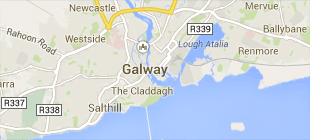-
Courses
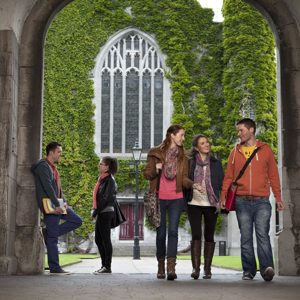
Courses
Choosing a course is one of the most important decisions you'll ever make! View our courses and see what our students and lecturers have to say about the courses you are interested in at the links below.
-
University Life
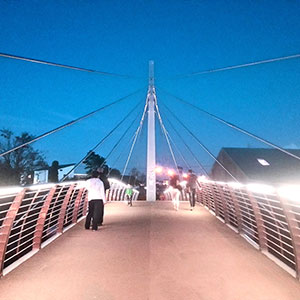
University Life
Each year more than 4,000 choose University of Galway as their University of choice. Find out what life at University of Galway is all about here.
-
About University of Galway
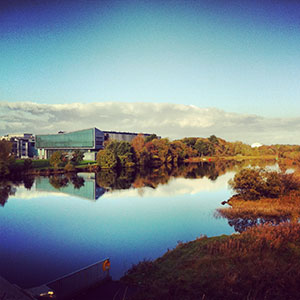
About University of Galway
Since 1845, University of Galway has been sharing the highest quality teaching and research with Ireland and the world. Find out what makes our University so special – from our distinguished history to the latest news and campus developments.
-
Colleges & Schools
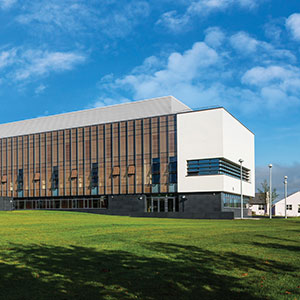
Colleges & Schools
University of Galway has earned international recognition as a research-led university with a commitment to top quality teaching across a range of key areas of expertise.
-
Research & Innovation
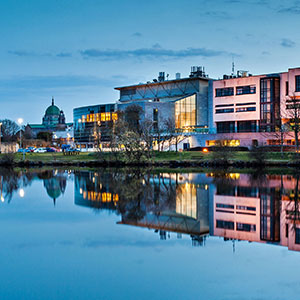
Research & Innovation
University of Galway’s vibrant research community take on some of the most pressing challenges of our times.
-
Business & Industry
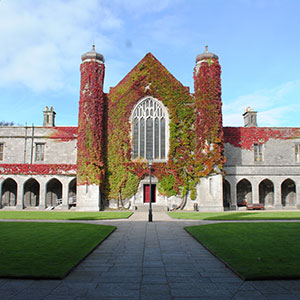
Guiding Breakthrough Research at University of Galway
We explore and facilitate commercial opportunities for the research community at University of Galway, as well as facilitating industry partnership.
-
Alumni & Friends
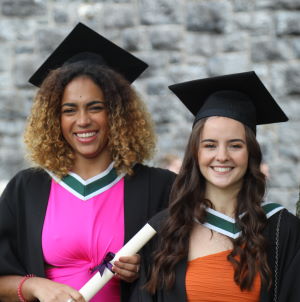
Alumni & Friends
There are 128,000 University of Galway alumni worldwide. Stay connected to your alumni community! Join our social networks and update your details online.
-
Community Engagement
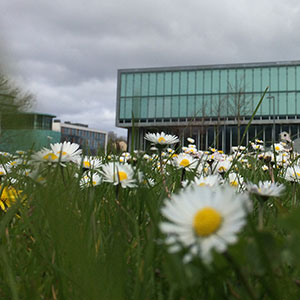
Community Engagement
At University of Galway, we believe that the best learning takes place when you apply what you learn in a real world context. That's why many of our courses include work placements or community projects.
Our History & Heritage
Our History
From Queen's College to National University of Ireland, the University's past is intertwined with the history of Galway and Ireland. Click below to watch a timeline of 175 Years of Memorable Moments.
Early Beginnings

The Quadrangle first opened its doors to 68 students on 30th October 1849 and the University, then known as Queen's College was born. The University was one of three Queen's Colleges, the others located in Cork and Belfast.
The Quadrangle building, built in local limestone in a Tudor Gothic architectural style, is modelled on Christ Church at the University of Oxford. The 'Quad' still stands proudly at the heart of the University today as a testament to its past. It is now used primarily for administrative purposes and houses the offices of the President and the Vice-Presidents.
In the first academic year, 1849 -1850, the University began with three faculties, Arts, Medicine and Law but there were also schools of Agriculture and Engineering. Female students later joined the student body and in 1906 Alice Perry graduated from the college, believed to be the first female engineering graduate in the world to receive a first class honours degree in civil engineering
There are many historical buildings on campus, such as the James Mitchell Museum, established in 1952. This geological museum contains high quality collections sampling a significant diversity of the planet's geology, with a fine display of fossils, minerals and rocks.
Changing with the Times

The University has had four different names:
- In 1849, it was called Queen's College Galway
- In 1908, it was changed to University College Galway, or UCG for short
- In 1997, it was changed again to National University of Ireland Galway, or NUI Galway for short
- In 2022, it was renamed to University of Galway
Newer parts of the University sprang up in the 1970s, including the iconic Arts/Science Concourse designed by architects Scott Tallon Walker. The 1990s also saw considerable development including the conversion of an old munitions factory into a student centre.
Since 2000, the University has invested €400 million in new buildings and facilities across campus. The early 2000s saw the addition of the Cairnes Building, Áras Moyola and the award-winning Engineering Building, all located in the north campus.
In recent years, we have added:
- a new Biomedical Science research centre
- the Institute for Lifecourse and Society
- the O'Donoghue Centre for Drama, Theatre and Performance
- and the new Human Biology building
As the capital development programme draws to a close, we are adding new residences on campus for over 900 students, as well as developing the Quadrangle - our very first building - into a centre for public and civic engagement.
University Presidents through the Years

Professor Ciarán Ó hÓgartaigh - 2018-
Professor Ó hÓgartaigh's term of office commenced in January 2018. A native of Galway city and a graduate of NUI Galway, Professor Ó hÓgartaigh came to the University from UCD, where he was Professor of Accounting and Dean of Business at UCD.
Dr James J. Browne - 2008-2018
An Engineering graduate of NUI Galway, Dr Browne is a former Dean of Engineering and Deputy-President of the University. Under his leadership the university expanded dramatically in terms of student recruitment, capital development, research output and international reputation. The campus was transformed with the addition of new facilities for teaching and research, including a state-of-the-art biomedical science complex, an award-winning Engineering building, a Human Biology building, medical academies in Galway, Castlebar and Letterkenny, an Arts & Humanities research facility to house the University's expanded archives, and a Centre for Drama and Theatre Studies, among others. Two SFI research centres specialising in medical devices and data analytics - CÚRAM and INSIGHT - were established here, our research community achieved over €100 million in EU Horizon 2020 funding and we climbed over 200 places in international rankings to be counted among the Top 1% of universities worldwide. Discover more highlights from this time in the '175 Years of Memorable Moments' video above.
Dr Iognáid G. Ó Muircheartaigh - 2000-2008
Dr Ó Muircheartaigh's term co-incided with development of a number of world-class research centres (eg. NCBES, REMEDI, DERI, Huston School of Film & Digital Media) and the construction of major new buildings, such as the Sports Centre, Áras Moyola, the IT Building and the Orbsen Building. Widely known as 'Iggy', key achievements of his term include a new approach to the promotion of third level education through Irish and the amendment of the 1929 Act. Discover more highlights from this time in the '175 Years of Memorable Moments' video above.
Dr Patrick F. Fottrell - 1996-2000
Dr Fottrell introduced the first strategic plan for the university in 1997 called Strategic Plan 2006, which resulted in the strengthening of research activities in the university and secured the development of the NUI Galway as a world-class university. Discover more highlights from this time in the '175 Years of Memorable Moments' video above.
Dr Colm Ó hEocha, 1975-1996
Under Dr Ó hEocha's leadership, student numbers doubled, research flourished and the present modern campus took shape. Discover highlights from this time in the '175 Years of Memorable Moments' video above.
Dr Martin J. Newell, 1960-1975
An esteemed professor of Mathematics in UCG, Dr Newell became President in 1960 and implemented many changes to the University, its campus and particularly to the curriculum by adding many new disciplines. Discover more highlights from this time in the '175 Years of Memorable Moments' video above.
Monsignor Pádraig de Brún, 1945-1959
Pádraig de Brún, was formerly a professor of Mathematics in Maynooth before he became President of UCG to which he brought his passionate belief in the importance of the Irish language. Discover more highlights from this time in the '175 Years of Memorable Moments' video above.
Monsignor John Hynes, 1934-1945
John Hynes, a Professor of Archaeology was instrumental in securing funding for UCG at a time of acute financial crisis and ensured the survival of the university. Discover more highlights from this time in the '175 Years of Memorable Moments' video above.
Alexander Anderson, 1899-1934
Alexander Anderson oversaw the transition from Queen's College Galway, a University of the United Kingdom to UCG, the designated Gaelic University of Saorstát Éireann and an increase in the student body from 100 to 600 people. Discover more highlights from this time in the '175 Years of Memorable Moments' video above.
William Joseph M. Starkie, 1897-1899
William Starke had a background in Ethics, History, English literature and Classical studies, and during his time as President of UCG, he published many studies on Irish education and the Classics. Discover highlights from his term in the '175 Years of Memorable Moments' video above.
Thomas William Moffett, 1877-1897
Thomas William Moffett was a Professor of Logic and Metaphysics and held the chair of History and English Literature before becoming President of UCG. He wrote and lectured extensively on Economics. Discover highlights from his term in the '175 Years of Memorable Moments' video above.
Edward Berwick, 1849-1877
Edward Berwick ,with a background in Law, led the university through very difficult times and defended Queen's College against its many detractors, so ensuring the survival of the college. Discover highlights from this time in the '175 Years of Memorable Moments' video above.
The Rev. Joseph W. Kirwan, 1845-1849
A thoughtful and eloquent speaker Rev. Kirwan held a Docorate of Divinity was the first President of Queen's College Galway. Discover highlights from his term in the '175 Years of Memorable Moments' video above.
Quick facts
University of Galway has:
- 4 Colleges
- 19 Schools
- 5 Research Institutes
- over 19,000 students
- 4,000 international students from 116 countries
- almost 3,000 staff members
- over 4,600 links with institutes across the globe
- 110,000 alumni worldwide
- 175 years experience providing university education
University of Galway Is:
- The Sunday Times University of the Year 2022
- Ireland's top University for graduate employability with 98% of our graduates employed or in further study within six months of graduating
- ranked in the top 2% of universities worldwide - QS World University Ranking
- the largest and oldest university in the west of Ireland
- listed among the top 30 most beautiful campuses in Europe
- Ireland's leading university for student volunteering with more than 4,000 registered volunteers
- the most biodiverse campus in Ireland
University of Galway is world leading for research in:
- Biomedical Science and Engineering
- Web Science
- Human Rights
- Marine Science, Energy and Environmental Science
- Applied Social Sciences and Public Policy
Humanities, in particular, Literature, Theatre and Irish Studies









